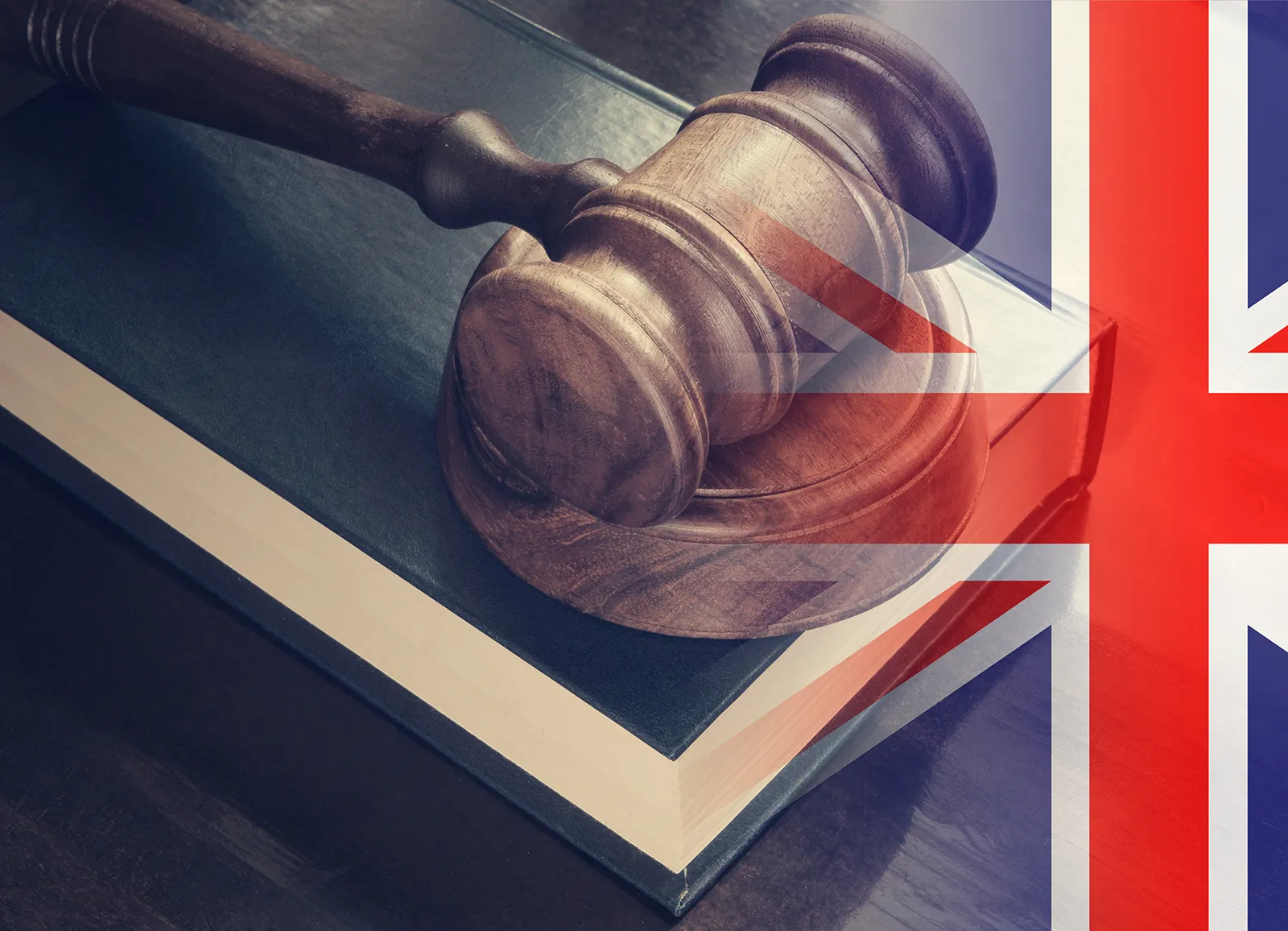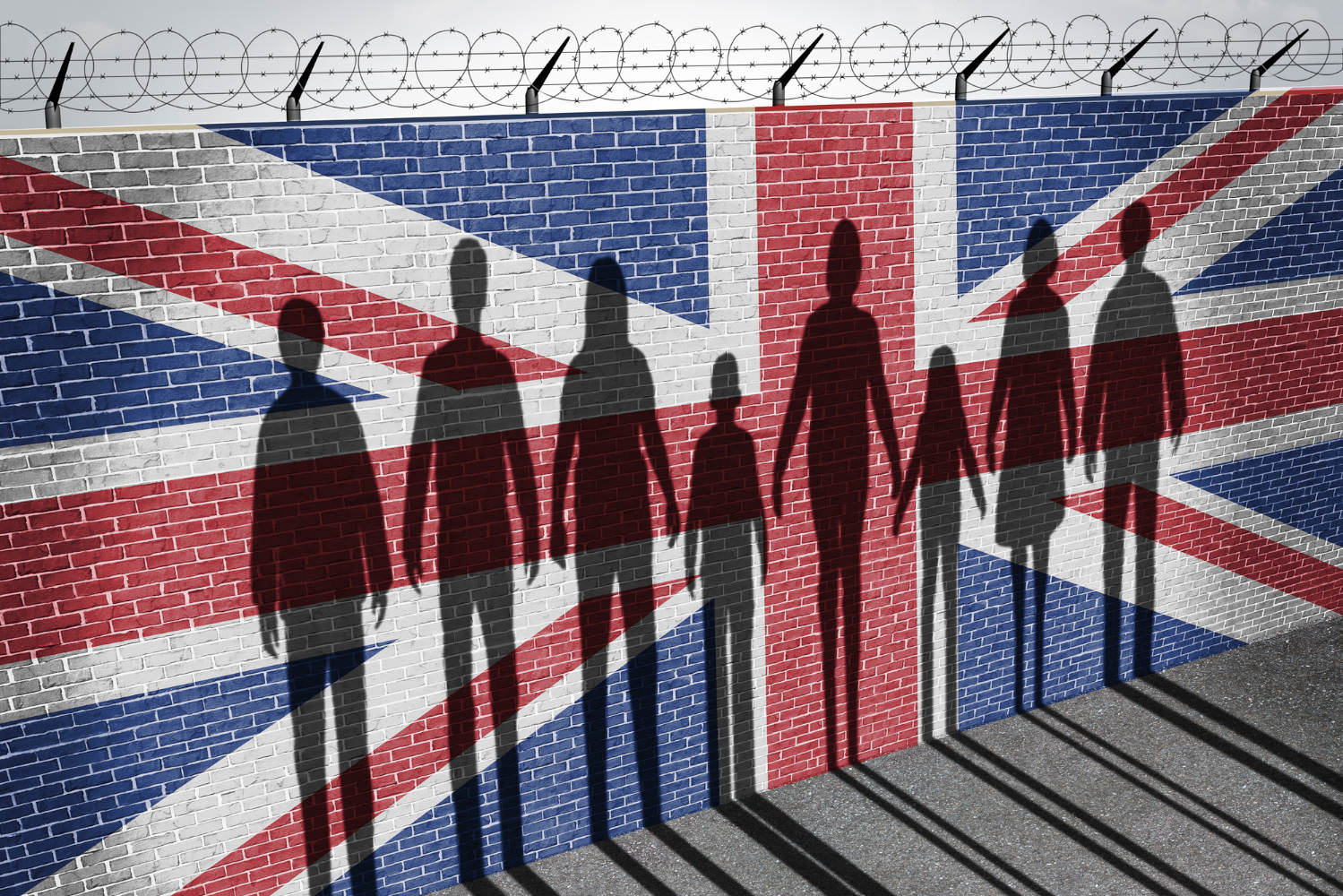Introduction
On 1 December 2020, the Tier 2 sponsor licence system was closed. In its place is a new Skilled Worker route. This is similar to Tier 2 but with many welcome changes. If you want to apply for a sponsor licence, or want to read about the current rules around sponsorship, then head over to our brand new Skilled Worker sponsor licence guide, fresh for 2021.
At the time of writing, if you want to recruit someone who is from outside of the EU, then chances are you will need a sponsor licence. However, when free movement ends after 31 December 2020, then from then you will also need a sponsor licence to hire EU nationals, at least to hire those not already living in the UK by 31 December 2020.
The sponsor licence system is therefore set to expand significantly in 2021 and there will also be various key changes taking effect from 1 January 2021. These will make it possible to sponsor a greater range of people. We will highlight these changes throughout this guide.
There are various types of sponsor licence which cover different organisation types. However, the most common licence by far is the Tier 2 General sponsor licence.
Applying for a Tier 2 sponsor licence is tricky. There is a lot of information to absorb, documents to provide, policies to put into place. Take, for example, the 209-page sponsor guidance document which you are supposed to make sense of, before you apply. And there are the supporting documents you need to provide when applying for a licence, listed in Appendix A, which requires you to navigate four ‘tables’, to work out which documents are required from you.
Then it is back to the 209-page sponsor guidance, and other associated guidance, to figure out the sponsor duties and to devise compliant HR systems.
The Home Office does not tell us how many Tier 2 sponsor licence applications are ‘refused’, or ‘rejected’, but anecdotally, including from the number of negative decisions we see from clients who come to us for help, the numbers are high.
Here we provide a comprehensive, step-by-step guide to applying for a sponsor licence. We cover the specific process of applying for a licence below, and you are welcome to skip straight to that section. However, the actual application process itself is a relatively small part of the bigger picture of successfully applying for and running a sponsor licence. We therefore encourage you, before you apply, to read the whole of this guide.
This guide makes sense of this complicated area, by explaining which jobs are capable of sponsorship, how to manage your licence, the various stages of the sponsorship process, and how to comply with your sponsor licence duties.
Employers often run into difficulties if they apply for a licence without really understanding how the sponsorship system works. Problems employers face include having an application rejected or refused, or experiencing compliance issues further down the line, including having a sponsor licence revoked (meaning all sponsored employees have their employment terminated). This guide should help you to successfully apply for, and then hold onto, your licence.
Major Changes from 1 January 2021
From 1 January 2021, EU nationals not already in the UK will also require sponsorship.
However, to ‘soften the blow’ of the loss of free movement, the sponsorship system will be radically changed to allow employers to sponsor a wider range of individuals.
In this guide we highlight what these key upcoming changes will be. This guide is therefore useful whether you are applying for a licence to sponsor immediately, or if you want a licence with a view to sponsoring from 2021.
Part A: Which jobs can be sponsored under Tier 2?
When is a Tier 2 sponsor licence not appropriate?
If you are considering applying for a Tier 2 General sponsor licence, then you must be clear on who can be sponsored under this licence, as certain sectors are excluded, as well as jobs below a certain pay or skill level.
First, if you are setting up a UK branch of your company then you might want to consider whether a Tier 2 Intra-Company Transfer sponsor licence is better for you.
Also, if you are in the business of recruiting in niche sectors, including religious workers, sportspersons, creative workers or charity workers, then there are other dedicated sponsor licences which you must use instead of Tier 2 General.
Top Tip! Working out the SOC code
When you look at Appendix J you might find that the job you are looking for is not listed. What do you do?
All jobs (within reason) are classified under a SOC code. It is the Office for National Statistics who handles the classification of jobs.
The ONS website contains all job codes. So if you cannot find the job on Appendix J, use this helpful search tool, to search by occupation title and find the relevant SOC code.
Once you have identified the appropriate SOC code, you can refer back to Appendix J.
What is the appropriate skill level to sponsor under Tier 2?
Skill level – RQF level 6 or above
The next task is to check that the job you wish to sponsor is at a sufficiently high skill level. All jobs are classified according to a skill level under the Regulation Qualifications Framework (RQF). Under Tier 2, the general rule is that jobs must be recognised at RQF level 6 or above, although there are various exceptions, which we explain below.
However, as we note below, from 2021 the minimum skill level will drop to RQF level 3 – which will allow a greater array of jobs to be sponsored.
All jobs should fall within a certain code under the Standard Occupational Classification System – or SOC code. Each SOC code contains a job description. To choose one example, if you were looking at a role of web designer, this would fall under the following: ‘2137 Web design and development professionals’.
Within each code are ‘Related job titles’. For example, Internet Developer is a related job title of 2137 Web design and development professionals.
You will need to refer to Appendix J of the Immigration Rules to find your relevant SOC code. This will then tell you at what RQF level the job is recognised at. Click on Table 2 to see which jobs are RQF level 6 or higher. Or click ‘open all’ and then do a keyword search (ctrl + f) to find the role.
It is important to understand it is the job role that must be recognised at a suitable skill level, but this does not mean the sponsored migrant must necessarily educated to that level. For example, if you want to sponsor a web designer, a role recognised at being at RQF Level 6 and thus a degree level job, the prospective employee does not necessarily need to have a degree.
That said, if a person is due to undertake a sponsored job recognised at degree level, but is neither academically qualified, nor has relevant prior work experience, then the Home Office are likely to question whether the job position has been artificially created in order to sponsor the individual. This could lead to the sponsor licence application being refused or, if the licence has already been granted, enforcement action being taken, based on there not being a ‘genuine vacancy’.
Exemptions from RQF level 6
There are important exceptions to the rule that jobs must be at RQF level 6 or higher. These include:
- If the job is on the Shortage Occupation List. Skilled Chefs are one such example: they are recognised at RQF level 3 yet can still be sponsored. Incidentally, there are specific issues to consider if you are a restaurant and want to employ a skilled chef.
- Certain creative sector roles.
Minimum skill level: KEY CHANGE FROM 2021
From 1 January 2021, as part of wider immigration reforms, the minimum skill level will drop from RQF level 6 to 3. This significant change will allow employers to sponsor individuals undertaking a far greater range of jobs, including ‘lower-skilled’ positions.
What are the minimum salary thresholds under Tier 2?
Under Tier 2 General, you will need to pay your sponsored employee a minimum salary. You should be clear at the outset what this will be, and whether this minimum rate will go up in the future.
There are two salary thresholds, and within each threshold there are different rates depending on whether your prospective employee will be classed as a ‘new entrant’ or ‘experienced worker’. The first threshold is a general minimum salary level, which applies across the board, and the second is a role-specific salary level, unique to each job title.
Working out the minimum salary level-step-by-step
Our step-by-step approach to calculating the relevant minimum salary threshold is as follows:
Step 1: Work out whether your prospective employee will be a ‘new entrant’ or ‘experienced worker’.
If your prospective migrant fits one of the following, then they will be classed as a ‘new entrant’:
- The individual you want to sponsor is currently here on a Tier 4 student visa and wants to ‘switch’ into Tier 2
- The person is under the age of 26 when they apply for their visa
- The person was recruited as part of a university milkround (there are additional rules which apply to milkrounds)
If the person does not meet one of these criteria, then they will be an ‘experienced worker’.
Step 2: Check what the minimum salary threshold is for the job you wish to sponsor.
When you identified the job on Appendix J (see Skill level – RQF level 6 or above section), you are also presented with the minimum salary level for that job. There is the higher level for the experienced worker and a lower level for the new entrant – go with whichever applies.
Step 3: Compare the minimum salary level associated with the given job title against the ‘general minimum salary level’.
By now you have identified the minimum salary level for the particular job. You now must compare this against the general minimum salary levels: for a new entrant this is £20,800, for an experienced worker this is £30,000. You must pay the individual whichever is the highest of the individual or general rate. Note, however, that the general minimum salary thresholds will decrease from 2021, see below (although the individual thresholds for each job will remain the same).
How much do I need to pay? Two case studies:
An employer wants to sponsor two new recruits: Anita and Fowzia.
Anita is currently studying on a Tier 4 visa and wants to switch into Tier 2 sponsorship with your company when she finishes her undergraduate degree. You want to employ her as a software engineer.
Her Tier 4 visa means Anita is a ‘new entrant’. Software engineers fall under the SOC code 2136 Programmers and software development professionals. The minimum salary rate for a new entrant under SOC code 2136 is £25,000. This is greater than the general minimum salary threshold for an experienced worker of £20,800. You must therefore pay Anita at least £25,000.
Fowzia is 30 years old and currently lives in Pakistan. You want to employ her as a web designer.
Fowzia does not meet any of the ‘new entrant’ criteria and so is classed as an experienced worker. Web designers fall under SOC code 2137 Web design and development professionals. The minimum salary rate for an experienced worker under SOC code 2137 is £25,700. This is below the general minimum salary threshold for an experienced worker of £30,000. You must therefore pay Fowzia at least £30,000.
If the individual is a new entrant – be prepared for the transition to experienced worker
A person can only be a new entrant for a maximum of three years, after which they will always become an experienced worker. This means that, if you are sponsoring a new entrant and paying near the associated minimum salary level, be prepared for a potentially significant hike in the future.
Minimum salary threshold for settlement
After five years in the Tier 2 General category an individual might be eligible for indefinite leave to remain. However, you should be aware (and certainly the migrant concerned should also know) that to qualify for indefinite leave to remain, there is a separate minimum earnings threshold. Currently this is £35,800, or the minimum rate for the particular role, whichever is the higher.
Calculating hours for minimum salary
Employers must be aware that the minimum salary level is usually based on a 39-hour week. This can be important if you are paying at, or very close to, the minimum level and the working week is more than 39 hours.
This is because when the Home Office considers a request for a certificate of sponsorship (or, if after granting a licence the Home Office audits you), if it sees a higher than 39-hour week, it makes a pro-rata calculation, which could lead to a conclusion you do not meet the threshold.
For example, if a person is to be paid £30,000 based on a 40-hour week, and the minimum salary threshold is £30,000, then this person would not meet the threshold, as the Home Office would expect you to be paying for that ‘extra hour’.
In this example, the Home Office would calculate the appropriate rate as follows: divide £30,000 by 39 (to work out the minimum hourly rate) then multiply (in this example) by 40, which would equal £30,769.23. This would exceed the general £30,000 minimum threshold.
Minimum salary thresholds: KEY CHANGES FROM 2021
One of the key areas of reform, from 1 January 2021, involves significant changes to the minimum salary thresholds. Although the minimum salary levels specific to each individual role will continue to apply at present rates, the general minimum salary thresholds will reduce, for:
- New entrants from £20,800 to £17,200
- Experienced workers from £30,000 to £25,600
However, it is possible to earn less than this, in limited circumstances. The new system is more of a proper points-based system, where you can earn points in different ways. For most people who are experienced workers, £25,600 will be the general minimum salary threshold.
However, in Home Office parlance, you might be able to ‘trade’ certain characteristics against a lower threshold. For experienced workers, if you will be earning between £23,040 to £25,599, then you will need to make up an additional 10 points, as below. If you will be earning between £20,480 and £23,039, then you will need to make up an additional 20 points.
How can you ‘top up’ in these circumstances? Only in limited circumstances, if:
- A job is on the Shortage Occupation List=20 points
- You have a PhD in a subject relevant to your job=10 points
- You have a PhD in a STEM subject relevant to your job=20 points
These changes to the minimum salary threshold, along with the lowering of the minimum skill threshold, will greatly open up the number of lower paid jobs that can be sponsored (albeit this measure is offset by the loss of free movement of EU nationals).
Part B: Who will manage your licence?
Choosing key personnel
Now that you have established whether you can sponsor the role, you might want to consider who will be responsible for managing your licence. There are various roles which the Home Office call Key Personnel which must be filled. These roles can be filled by different people or by the same person.
For larger organisations, you might consider spreading the roles across at least a couple of people. However, in practice, for many smaller businesses the owner or a director will carry out all functions.
The key personnel are:
- The Authorising Officer
The Authorising Officer is the most senior person responsible for recruitment of migrant workers and has overall responsibility for managing the licence. The authorising officer decides who has access to the system, but the authorising officer does not itself grant access to the management of the Sponsor Management System (to have access the authorising officer must also be set up as a Level 1 or Level 2 User).
- Key Contact
As the name suggests, the Key Contact is the person who acts as the main contact between your organisation and the Home Office. Again, the Key Contact will need to also be a Level 1 or Level 2 User to have access to the system.
- Level 1 User
The Level 1 User has access to the Sponsor Management System and so carries out day-to-day administrative functions, such as requesting or assigning a certificate of sponsorship.
- Level 2 User
The Level 2 User also has access to the Sponsor Management System but with fewer administrative privileges. It would tend to be larger companies which would require a Level 2 User.
There are various rules about who can act as key personnel and you should read the relevant section of the guidance on Key Personnel for full details. However, it is worth highlighting that the Home Office will do background checks on Key Personnel. Your Key Personnel must not have any criminal convictions.
Your application can also be refused if Key Personnel, or your organisation, is associated with previous immigration offending or with previous issues around sponsor licence enforcement. This is an area with a lot of detail which is outside the scope of this guide, but please feel free to contact us if you have any concerns in this regard.
Part C: What type of certificate of sponsorship (restricted or unrestricted)?
Do I need an unrestricted or a restricted certificate of sponsorship?
The following areas is a technical one but nonetheless important to understand. A certificate of sponsorship is a virtual document, which is allocated to you once you have a licence. Once you have been allocated a certificate, you can then assign this to the individual you wish to sponsor. Once this is assigned then the migrant can apply for his or her visa.
However, it is important to understand that there are presently two types of certificate: ‘unrestricted certificates of sponsorship’ and ‘restricted certificates of sponsorship’. Depending on your prospective migrant employee’s immigration status and job role, you will need one or the other. It is essential that you apply for, and assign, the correct type – assigning the wrong type can lead to enforcement action and having your licence revoked.
Here we explain what the differences are and when you will need either.
Unrestricted certificate of sponsorship
As the name implies, there is no restriction on the number of unrestricted certificates of sponsorship which can be handed out by the Home Office. Individuals who will need an unrestricted certificate of sponsorship include:
- Migrants who are already in the UK on a different visa. Individuals ‘switching’ from one visa category to Tier 2, will require an unrestricted certificate of sponsorship. However, not all visa categories are permitted to switch into Tier 2 in this manner. One category who can switch into Tier 2 are Tier 4 students, provided the individual is studying at degree level.
- Your existing Tier 2 sponsored employees who wish to extend their Tier 2 visa
- So called ‘High Earners’, who will be earning £159,600 or more a year
- Individuals who will be sponsored to work in a job recognised under Appendix J as being PhD-level.
Restricted certificate of sponsorship
By contrast, restricted certificates of sponsorship are subject to a monthly cap. There is a set number of restricted certificates of sponsorship available each month, equating to 20,700 per year.
If the cap is reached (which happened in 2018 for many months), then there is a point scoring system to decide who should be allocated a certificate. Thankfully the cap has not been reached for some time, and in any event, the cap will be abolished from 2021.
You will need a restricted certificate of sponsorship if the individual is based overseas, and does not meet one of the criteria of persons who qualifies for an unrestricted certificate of sponsorship, such as a ‘high earner’ or a person doing a PhD recognised job.
A word of warning to be careful if sponsoring family members!
A quick note to be aware of extra rules and duties if you are intending to sponsor a family member. A Level 1 or Level 2 User must not assign a certificate of sponsorship to a family member (and ‘family member’ is defined widely) or their partner – if they do, then this is a mandatory ground for having your licence revoked.
You must also disclose to the Home Office if you assign a certificate of sponsorship to a family member of anyone within your organisation.
Restricted/unrestricted certificates: KEY CHANGE FROM 2021
From 2021 the monthly cap will be abolished.
Can I apply for a certificate of sponsorship when I submit my sponsor licence application?
If you are applying for your licence, then it is possible (and common practice) to request an unrestricted certificate of sponsorship while you submit your licence application. If you do this, then when you are granted your licence it should come with any unrestricted certificates of sponsorship you requested.
If you are applying for a licence, with view to sponsoring someone on a restricted certificate of sponsorship, then you will first need your licence. Only then can you apply for your restricted certificate of sponsorship.
Once you have your licence, you can request additional certificate of sponsorships as and when required. You can also request an annual allocation of certificates of sponsorship.
Part D: Recruiting for the role
When is a resident labour market test required?
In order to show no suitable ‘settled worker’ can do the job, you will need to run a ‘resident labor market test’ unless an exemption applies.
There are several exemptions to the resident labour market test, some of which are fairly obscure. The main exceptions are:
- Tier 4 students who have completed a course at degree level or above, or are applying no earlier than 3 months before their completion date
- Jobs which are on the Shortage Occupation List – see Appendix K
- If the migrant is needs to extend his or her visa and is continuing to work for you in the same occupation
- High earners – people who will be receiving a salary package of £159,600 or above
If none of the above exceptions apply, then you will need to carry out a resident labour market test.
Who is a ‘settled worker’?
Most commonly this includes someone who is British or who holds indefinite leave to remain.
Commonwealth citizens with an Ancestry visa, or with a Right of Abode are also treated as settled.
So too, for the time being are EU nationals. But it appears that from 2021 EU nationals will no longer automatically be treated as settled, unless they have obtained indefinite leave to remain (known as Settled Status, if obtained through the EU Settlement Scheme)
Resident labour market test: KEY CHANGES FROM 2021
Employers will be delighted to hear that the labour-intensive resident labour market test is being abolished from 1 January 2021!
The importance of writing an accurate and compliant job description
Before we deal with the technicalities of the resident labour market test, it is important to ensure your job description is well thought through and that the job description/duties are broadly in line with the description in the relevant SOC code.
Appendix J sets out ‘Example job tasks’ next to each SOC code. The role you are looking to fill should broadly accord with the Example Job tasks. If most of the duties in your job description fall into another SOC code, then you are using the wrong code. Furthermore, this is likely to be picked up by the Home Office in any audit and could lead to enforcement action.
However, it could also look suspicious if your job description mirrored the Example job tasks in Appendix J. This issue of essentially ‘cut and pasting’ from the SOC code into a job description was one of the reasons why the Home Office refused a migrant’s Tier 2 visa application, in a case which reached the Court of Appeal in 2017.
Employers therefore must often walk a fine line, between ensuring a job description is sufficiently in-line with the appropriate SOC code, whilst ensuring the job description does not seem contrived.
You should also bear in mind that if you are inspected, then you and your sponsored migrant will be expected to be undertaking work which accords with the job description in the original job advert.
When it comes to recruitment selection, you should bear in mind that you can only reject a settled candidate if they do not meet essential criteria. You should not reject a settled worker because they do not possess ‘desirable’ skills or experience.
If, ultimately, there is a certain individual you have in mind to sponsor, then careful formulation of the job advert is essential.
How do you carry out a resident labour market test?
The point of the resident labour market test is to show that you are not giving a job to a non-settled worker, where a settled person could do the role.
The resident labour market test must be carried out in a highly prescriptive manner. You must include specific information in the advert, you must advertise for at least calendar 28 days, you must advertise in certain mediums, and you must record the advert in a certain manner.
You really do need to check the relevant section of the guidance to see exactly what you need to do (see paragraph 28.17). You should also refer to the relevant sections of Appendix D which will tell you the precise documents you need to retain, as there are many variables which would be too great to cover here. What follows is a summary of the key points.
You need to advertise for at least 28 calendar days. You must usually advertise in at least 2 mediums set out in the guidance. One of these most ordinarily be through the Government website Find a Job, although certain roles are exempt from having to advertise there.
There are various options for the second medium, although usually our clients will advertise through a well-known job-search engine, such as Indeed. The second method can include your own website, but only if you are a multi-national/global operation, or have over 250 employees in the UK.
You will need to take screenshots of the job advert when it goes live. Appendix D will tell you exactly what information needs to be contained in the advert.
It is important to carry out a compliant resident labour market test. As well as having to provide evidence when you apply for a sponsor licence, evidence of the test will almost certainly be requested if/when you are inspected.
Do I need to advertise even if I do not need to run the resident labour market test?
You must if you are not exempt. However, when you sponsor someone you must always satisfy the Home Office there is a ‘genuine vacancy’.
We have seen refusal letters/enforcement action taken on the basis that an employer has not shown there is no suitable settled worker who can do the job, even where there is a resident labour market test exemption.
Paragraph 24.6 of the sponsor guidance states:
Tier 2 allows UK employers to employ nationals from outside the settled workforce to fill skilled jobs which cannot be filled by settled workers. A migrant sponsored under any Tier 2 category must not displace a suitable settled worker, which means that you can only offer a job to a migrant you wish to sponsor under Tier 2 if there is no suitable settled worker available to fill the vacancy.
Our safety-first approach is that, if you are exempt from the test and have genuinely been having difficulties recruiting for a position, that you provide some evidence, including at least an explanation, of your efforts to recruit through the settled workforce.
It is also important to note, that when you apply for a licence, if you are applying for a certificate of sponsorship for a particular individual, you must provide evidence of how you identified this person, or if you did not advertise for the job, you must show how you identified this person is most suitable for the job. This information is requirement in respect of all individuals, not just those for whom a formal resident labour market test applies.
We are not suggesting that you undertake a full resident labour market test even if an exemption applies. But we are saying that, if you can provide some evidence or information to explain why you could not recruit through the settled workforce, even if this falls significantly short of any formal labour market test, then you are less likely to have a problem.
This cautious approach is probably not necessary if a job is on the Shortage Occupation List.
Part E: Timing is everything!
Making sense of the various timescales
Before you go ahead and apply for your licence, you need to be aware of some important and strict deadlines and timescales which apply. Being on top of these time scales is particularly important if, for example, you have a narrow window to recruit someone.
You should bear in mind that:
- The resident labour market test (if it applies) will take a minimum of 28 days. But then you must factor in the rest of selection process – e.g. shortlisting and interviews
- Once you submit the sponsor licence application, the Home Office says it will decide applications within eight weeks. In practice, applications are being decided in about five weeks.
- If you are applying for a licence and will need a restricted certificate of sponsorship, you must apply for and then be granted a licence before you apply for a restricted certificate of sponsorship.
- If you are applying for a restricted certificate of sponsorship, then there is a ‘monthly cycle’. Any request made by the 5th day of each month is considered on the 11th day of the month and you should be allocated a restricted certificate of sponsorship on or not long after the 11th day of the month.
- You must assign the certificate of sponsorship within six months of first advertising the job under the Resident Labour Market Test. Any longer than this and the resident labour market test is not valid.
- The prospective employee must submit his or her Visa Application within three months of the certificate being assigned.
- The prospective employee can submit his or her visa application up to three months in advance of the start date with the new employer.
- If the person is applying for his or her Tier 2 visa from abroad, then there is a wait of up to three weeks for a decision, from the date you attend the visa application centre. However, if you pay an additional fee for the Priority Service, then you get a decision within five working days.
- If the person is applying from within the UK, then the decision can take up to eight weeks, from the date of the biometrics appointment. However, you can pay an additional fee for the Priority Service and get a decision within five working days. You can alternatively pay for the Super Priority Service, which buys you a decision by the end of the next working day.
Before you apply for a licence, you should set a clear ‘road map’ towards the person commencing employment with you, allowing for the various factors above.
Part F: Applying for the sponsor licence
Risk of applying without someone identified
Before we consider the application process itself, we want to highlight the risks of applying for a licence without having identified an individual (if you have identified someone and are making this clear in the application, then skip this section).
Whilst there is nothing to stop you applying for a licence without having identified someone, we have seen several such applications turned down. One of the mandatory grounds of refusal of a sponsor licence application is as follows:
‘If you are applying under Tier 2 and we are not satisfied that you can offer genuine employment that cannot be filled by a resident worker, and/or that meets the Tier 2 requirements.’
If you are operating in a sector which depends on jobs which are on the Shortage Occupation List, then this should be made clear in your sponsor licence covering letter, and it should then be less of an issue if you have not identified someone.
If, however, you do in fact have someone that you would like to sponsor, then it is best to be upfront about this in the licence application. Even if a position is exempt from the resident labour market test, then you are still required to provide evidence of how you identified this person.
Provide documents listed in Appendix A
Before you submit your application online, ensure that you have all required supporting documents. These are listed in Appendix A. Appendix A is not user-friendly. You need to work through a series of ‘tables’ to work out which documents you need – until you have amassed a total of at least four.
Do make sure you work through these tables in sequence, 1-4, although in my experience, an employer normally ends up getting all four documents from Table 4. There is a requirement that documents be originals or certified copies. There is considerable detail in the main sponsor guidance about how documents should be certified. As ever, these requirements by the Home Office fail to take account of the real world, where documents tend to be auto-generated through HMRC, or by companies, and so the document has never been an ‘original’, in the way the Home Office mean.
Bear in mind, the guidance also tells you to include a hierarchy chart ‘detailing any owner, director and board members. If your business has 50 employees or fewer, you must list all employees and set out the names and titles of all staff.’
As well as documents, requested information in Appendix A is mandatory
Be sure to include a detailed cover letter with your application which covers the mandatory information required from you, as stated in pages 6-7 of Appendix A. We have seen applications rejected due to employers failing to provide this information.
At Truth Legal we have a 100% success rate in sponsor licence applications, with zero rejections or refusals. We put this down to our assiduous case preparation, and our covering letter which we will write on behalf of our clients. This cover letter is the culmination of our dedicated work with our clients, ensuring we take careful instructions to tailor the letter to our client and all Home Office requirements (note the cover letter must be sent by the employer and, if you instruct us, you must always ensure you are entirely happy with the contents of the letter and review and amend it as necessary).
Submit the application online (and then post it!)
In typical Home Office fashion, the ‘online’ form requires you to then print off something called the Submissions Sheet, which you post along with your covering letter and supporting documents.
Part G: Help! My sponsor licence application has been rejected or refused
If you have already applied for your licence, but received a negative decision, it is essential to fully read and understand the basis of the negative decision. If you failed to provide certain mandatory information, then your application might have been ‘rejected’. Annoyingly, the Home Office does not necessarily tell you exactly what was wrong with the application, but instead will simply ‘cut and paste’ sections from the sponsor guidance documents, which merely alludes to what might be the problem.
Alternatively, you might have been ‘refused’, for any number of reasons. Common reasons for refusal include not paying the salary the minimum salary threshold, or if the Home Office believe the vacancy is not genuine.
Either way, if you want to reapply, you will need to check whether there is a ‘cooling-off’ period which prevents you from reapplying for a certain period. You will certainly need to address any reasons for rejection/refusal in any subsequent application.
At Truth Legal Solicitors, we have a 100% record in helping employers to apply for a sponsor licence, in circumstances where, prior to instructing us, they had either been rejected or refused.
Explainer: Rejection vs Refusal
The difference between a ‘refusal’ or ‘rejection’ of a sponsor licence application is important – a ‘rejection’ is the lesser of two evils, as you can apply again straight away, whereas a ‘refusal’ means that normally a ‘cooling-off period’ applies, whereby you must wait at least six months before reapplying.
How we can help
At Truth Legal we will provide you with an initial free, no-obligation, consultation to check if you are likely to be eligible for a licence.
If you then instruct us, we will guide you through the entire application process. This includes:
- A detailed conference (to establish the sponsoring routes for individuals, salary, whether a resident labour market test applies, key personnel, sponsor duties, compliance)
- Help devising a compliant job advert/resident labour market test (where applicable)
- Reviewing all supporting documents
- Drafting a detailed covering letter
- Being on the telephone whilst you submit your sponsor licence application
- Assisting you with applying for a certificate of sponsorship (whether as part of the licence application or separately)
- Helping you to assign the certificate of sponsorship to the migrant
- Basic visa advice for the migrant
If you would like to discuss your sponsor licence application, and for a free 30-minute consultation, contact us today.
Part H: Sponsor licence compliance
What is compliance?
When you apply for a licence, you agree to fulfill certain duties which relate to your sponsor licence. The sponsorship system is built on the understanding that (in the words of the Home Office)
‘Those who benefit most directly from migration (that is the employers, education providers or other bodies who are bringing migrants to the UK) must play their part in making sure the system is not abused.
The Home Office needs to be sure those applying to come to the UK to do a job or study are eligible to do so, and a reputable employer or education provider genuinely wishes to employ or enrol them.’
Through the sponsorship system, the Home Office has effectively outsourced much of the monitoring of migrant employees to the employer. The Home Office therefore expects you to take your sponsor duties seriously. These duties are commonly referred to as sponsor licence compliance.
Here is a brief outline of your sponsor duties and responsibilities.
Job suitability
You must only assign a certificate of sponsorship to a migrant where there is a suitable job. This goes to issues around minimum rates of pay and skill level (see above, Part A: Which jobs can be sponsored under Tier 2).
Monitoring sponsored employees
Before you can properly monitor your sponsored employee, you will need to understand what your reporting duties are. Again, these are set out in some detail in the main sponsor guidance, Tiers 2 and 5: guidance for employers. To choose just a couple of many duties, you must report within 10 working days, if a sponsored migrant does not turn up for their first day of work, giving any reason for their non-attendance.
If a sponsored employee is absent from work for more than 10 consecutive working days without permission, you must report this within 10 working days of the 10th day of absence.
Reporting changes to the business
There are also strict requirements, and deadlines, to report certain changes to your business. One example, which catches many out and which if unreported can lead to enforcement action, is the requirement for you to change your address or change Key Personnel.
Record keeping duties
Appendix D set out the documents you are required to retain in order to be compliant. It is beyond the scope of this legal guide to go through all the required records, and so you really must carefully read the Home Office guidance or request our assistance to guide you through this.
However, in brief you must retain copies of documents personal to each sponsored employee. For example, this includes their passport, biometric residence permit, NI number, contact details and record of absences.
Where a resident labour market test is required, there are highly prescribed documents to retain, including screenshots of the job advert, where advertised online.
On an on-going basis, you must retain evidence relating to the employee’s pay, as well as the contract of employment. You must keep a copy of the job advert and, where a requirement of the job specification, any relevant qualifications.
What are the sanctions for non-compliance?
Refusing your sponsor licence application
If the Home Office discerns that you cannot comply with your duties at the sponsor licence application stage, then it will refuse your sponsor licence application. You will be subject to a ‘cooling-off’ period during which you may not make a further application. The cooling-off period will be at least six months.
Sponsor licence suspension
If your licence has already been granted, and you are found in breach of your sponsor licence duties, then you could receive notification that your licence is due to be suspended. During the period of suspension your existing sponsored employees can continue to work for you. You will, however, be prevented from assigning a certificate of sponsorship to a new employee.
Once suspended then the Home Office will consider whether to reinstate, downgrade or revoke your licence. You will be given 20 days to make representations, to argue why your licence should be reinstated. You will need to provide considered evidence to rebut any reasons for suspension.
Sponsor licence revocation
The effect of sponsor licence revocation is usually devastating, both for the employer and any affected employee. If your licence has been revoked, then any sponsored migrant working for you will have their visa curtailed.
If your licence has been revoked then there is usually a ‘cooling-off’ period of 12 months, or potentially longer, before you can apply for a fresh licence.
There is no right to appeal against a decision to revoke your licence. A revocation decision can, however, be challenged by judicial review and this is something that we can help you with. However, we would always try to use ‘soft tactics’ first with the Home Office, to try and get your licence reinstated.
Preparing for an inspection
You are likely to be inspected at some point during the currency of your licence. You might be inspected either before being issued with a licence, or after you have been granted a licence.
Our advice is to prepare for a licence inspection prior to being granted a licence. This means ensuring that you have appropriate HR systems in place to comply with your sponsor licence duties from when you submit your application. We can help you to have compliant systems, see the section below, How we can help you to become compliant.
Whilst as a proportion, more businesses are inspected after they receive their licence, many businesses are inspected pre-grant. It is therefore prudent to be prepared from the outset. Furthermore, once you have proper systems in place from the outset, then you avoid having to do the work further down the line, often in ‘fire-fighting mode’, when you receive a notice you are about to be visited.
The inspection will normally involve a Home Office case worker holding in-depth interviews with the Authorising Officer and other Key Personnel, as well as any sponsored migrants.
Expect the Home Office to meticulously check how you are complying with your duties. Particular areas of focus are likely to be: how you are able to comply with your monitoring and record-keeping duties; how you conducted the resident labour market test; whether the sponsored vacancy is genuine; and how you are meeting your Right to Work obligations.
How we can help you to become compliant
The Immigration Team at Truth Legal are experts at sponsor licence compliance. We can help you to keep on top of your sponsor licence duties and help you to stay on the right side of the Home Office.
If matters are at a more advanced stage, and if the Home Office is already taking an interest in your company, or have already taken sanctions against you, then we can help.
We can help you in various ways:
Providing HR compliant policies
The best way to avoid enforcement action is to ensure you have compliant HR policies and systems in place at the outset. Whether you are applying for a licence, or already have a licence, we can provide cost-effective, tailored Compliance Packages to ensure you stay on the right side of the Home Office.
Conducting a ‘mock-audit’ of your systems and provide you with an action-plan.
We can test your existing systems to see if they are compliant. We provide an Action-Plan to advise you on areas to improve. We can either conduct the assessment on-site or remotely. This increases the likelihood of you being compliant on an on-going basis, prepared for when any inspection comes.
Making representations on your behalf and advising on the best evidence to challenge enforcement action
If you have received notification of enforcement action, and have been invited to make representations, then we can assist you with this. We understand what the Home Office want to see. We can advise you on documents to provide, changes to make within your organisation, and can write a letter of representations on your behalf.
Advising you on best next steps if your licence has been revoked, including potential judicial review challenge.
If your licence has been revoked, we can review your case and advise you on the best course of action. It might be the case that carefully prepared representations, showing suitable contrition with a suitable action plan, can be enough to have your licence reinstated.
In certain cases, judicial review might be the best course of action, in which case we will represent you in all aspects of the challenge.
Truth Legal – Expert Immigration Solicitors
Louis MacWilliam who heads up our Immigration Team. With over 11 years’ experience as a dedicated immigration specialist, Louis is one of the few genuine immigration experts in this area.
If you want to apply for a sponsor licence, or have any other issue relating to your sponsor licence, contact us for a free consultation today.
Want to hear more about the brand new Skilled Worker route?
More Legal Guides
Comprehensive and free legal guides from Truth Legal Solicitors.












